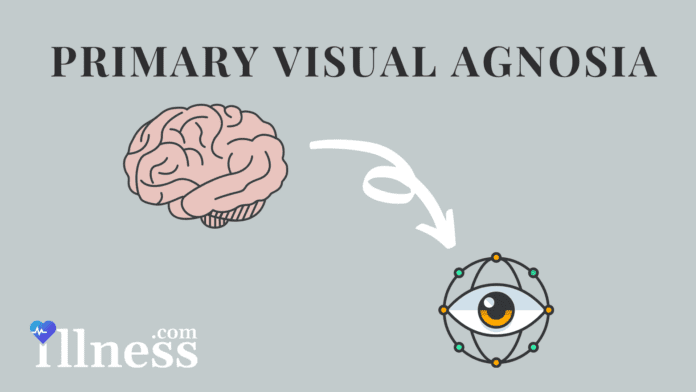Overview
Primary Visual Agnosia is a rare neurological disorder characterized by the total or partial loss of the ability to recognize and identify familiar objects and/or people by sight. This occurs without loss of the ability to actually see the object or person. The symptoms of visual agnosia occur as a result of damage to certain areas of the brain (primary) or in association with other disorders (secondary).
Commonly Associated With
agnosis, primary
apperceptive agnosia
associative agnosia
monomodal visual amnesia
visual amnesia
Cause
Primary visual agnosia is a rare neurological disorder that occurs as a result of damage to the brain. Symptoms develop due to the inability to retrieve information from those damaged areas that are associated with visual memory. Lesions may occur as a result of traumatic brain injury, stroke, tumor, or overexposure to dangerous environmental toxins (e.g., carbon monoxide poisoning). In some cases, the cause of the brain damage may not be known. Symptoms may vary, according to the area of the brain that is affected.
Visual agnosia may also occur in association with other underlying disorders (secondary visual agnosia) such as Alzheimer’s disease, agenesis of the corpus callosum, MELAS, and other diseases that result in progressive dementia.
Symptoms
People with primary visual agnosia may have one or several impairments in visual recognition without impairment of intelligence, motivation, and/or attention. Vision is almost always intact and the mind is clear. Some affected individuals do not have the ability to recognize familiar objects. They can see objects but are unable to identify them by sight. However, objects may be identified by touch, sound, and/or smell. For example, affected individuals may not be able to identify a set of keys by sight, but can identify them upon holding them in their hands.
Some researchers separate visual agnosia into two broad categories: apperceptive agnosia and associative agnosia. Apperceptive agnosia refers to individuals who cannot properly process what they see, meaning they have difficult identifying shapes or differentiating between different objects (visual stimuli). Affected individuals may not be able to recognize that pictures of the same object from different angles are of the same object. Affected individuals may be unable to copy (e.g., draw a picture) of an object.
Associative agnosia refers to people who cannot match an object with their memory. They can accurately describe an object and even draw a picture of the object, but are unable to state what the object is or is used for. However, if told verbally what the object is, an affected individual will be able to describe what it is used for.
In some cases, individuals with primary visual agnosia cannot identify familiar people (prosopagnosia). They can see the person clearly and can describe the person (e.g., hair and eye color), but cannot identify the person by name. People with prosopagnosia may identify people by touch, smell, speech, or the way that they walk (gait). In some rare cases, affected individuals cannot recognize their own face.
Some people have a form of primary visual agnosia associated with the loss of the ability to identify their surroundings (loss of environmental familiarity agnosia). Symptoms include the inability to recognize familiar places or buildings. Affected individuals may be able to describe a familiar environment from memory and point to it on a map.
Primary agnosia is associated with bilateral damage to the ventral visual stream, including the lingual and fusiform gyri.
Primary visual agnosia can be distinguished from other visual disorders such as simultanagnosia that is a characterized by the inability to read and the inability to view one’s surroundings as a whole. The affected individual can see parts of the surrounding scene, but not the whole. There is an inability to comprehend more than one part of a visual scene at a time or to coordinate the parts.
In rare cases, people with primary visual agnosia may not be able to recognize or point to various parts of the body (autotopagnosia). Symptoms may also include loss of the ability to distinguish left from right.
Exams & Tests
A variety of psychophysical tests can be conducted to pinpoint the nature of the visual process that is disrupted in an individual. Brain damage that causes visual agnosia may be identified through imaging techniques, including computed tomography (CT scan) and magnetic resonance imaging (MRI).
Treatment
Treatment of primary visual agnosia is symptomatic and supportive. Affected individuals may undergo exercises or rehabilitation to relearn about objects necessary for everyday living. Exercises and rehabilitation to help restore lost memories may also be helpful.
In cases of secondary visual agnosia, treatment of an underlying disorder may reduce symptoms and help prevent further brain damage.
Other
Primary visual agnosia is an extremely rare neurological disorder that affects males and females in equal numbers. The first detailed account of visual agnosia in the medical literature occurred in 1890.
Source
https://rarediseases.org/rare-diseases/primary-visual-agnosia/



